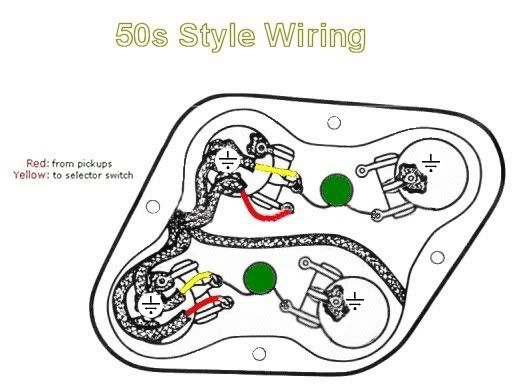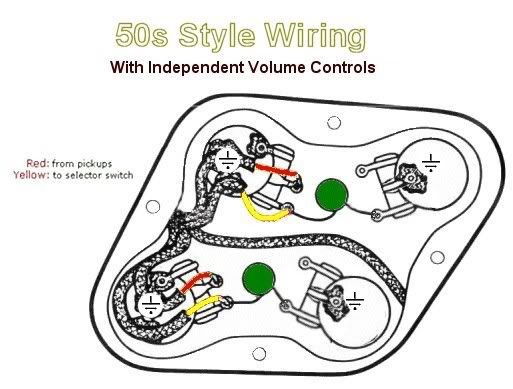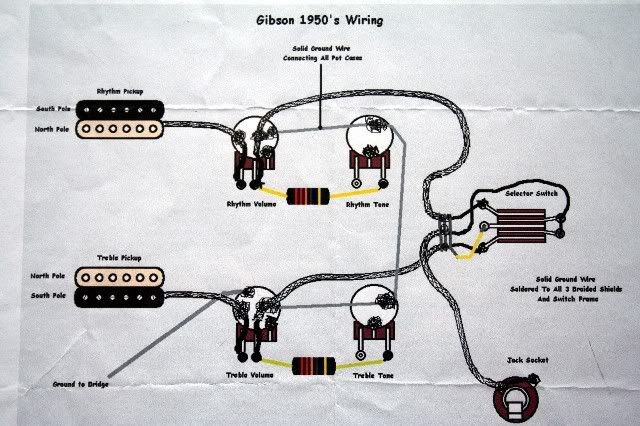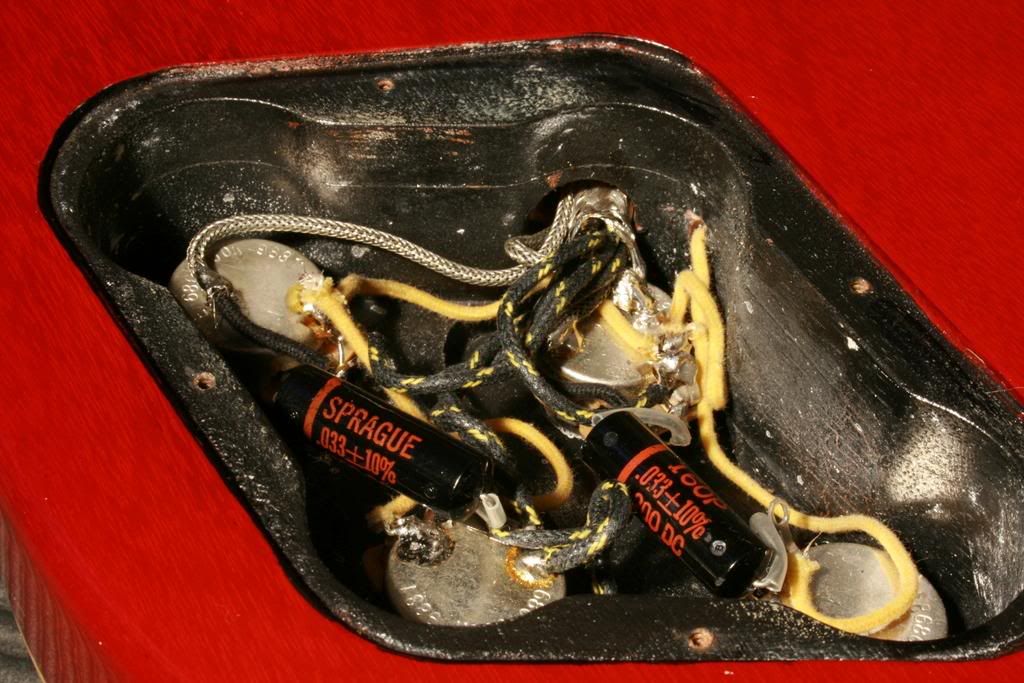Hi!
It seems there are more than one "50s wiring" :lol:



Which one is the real 50s wiring? The first one?
I'd like to try a "de-coupled" mod because I like to mix the pick ups using the volume pots. What do you think is better? the second or the third one?
It seems there are more than one "50s wiring" :lol:



Which one is the real 50s wiring? The first one?
I'd like to try a "de-coupled" mod because I like to mix the pick ups using the volume pots. What do you think is better? the second or the third one?






